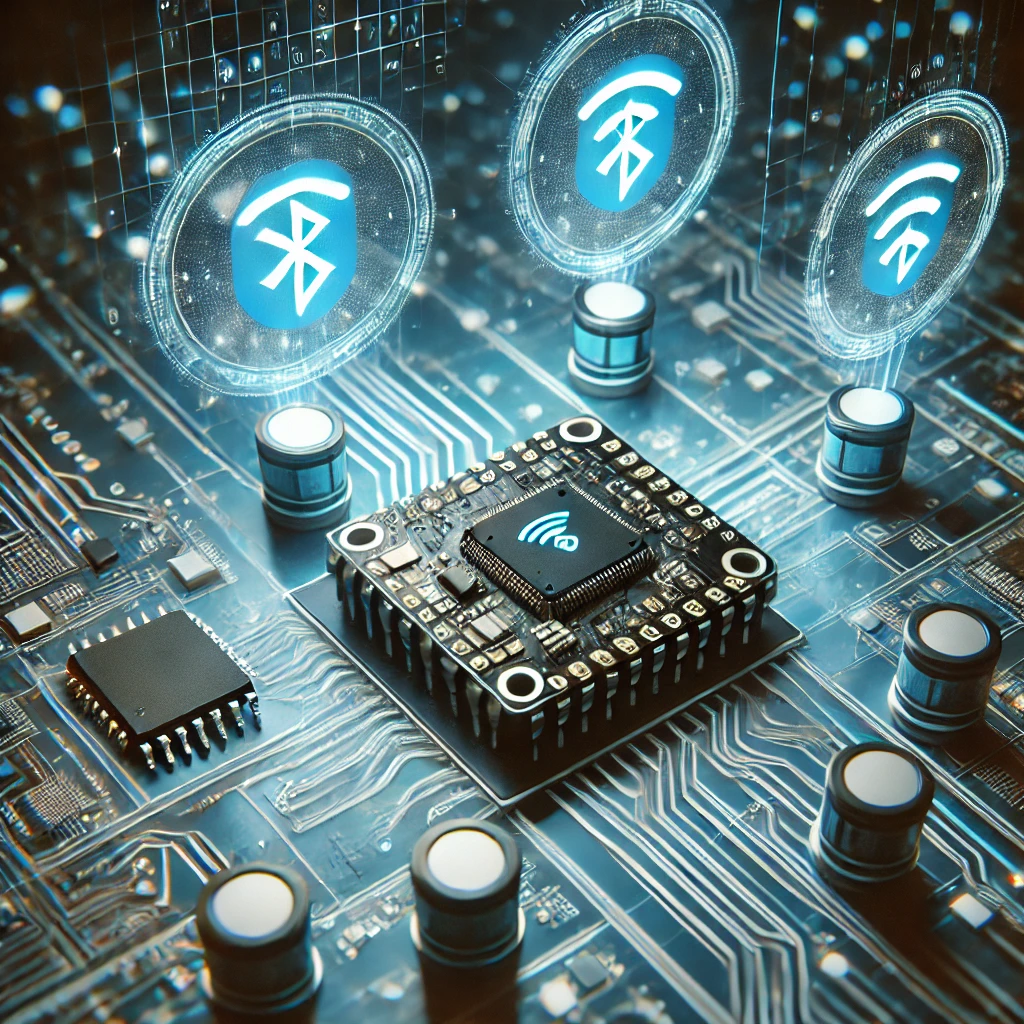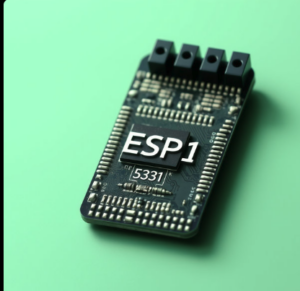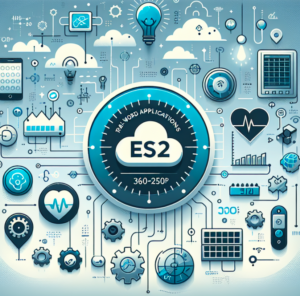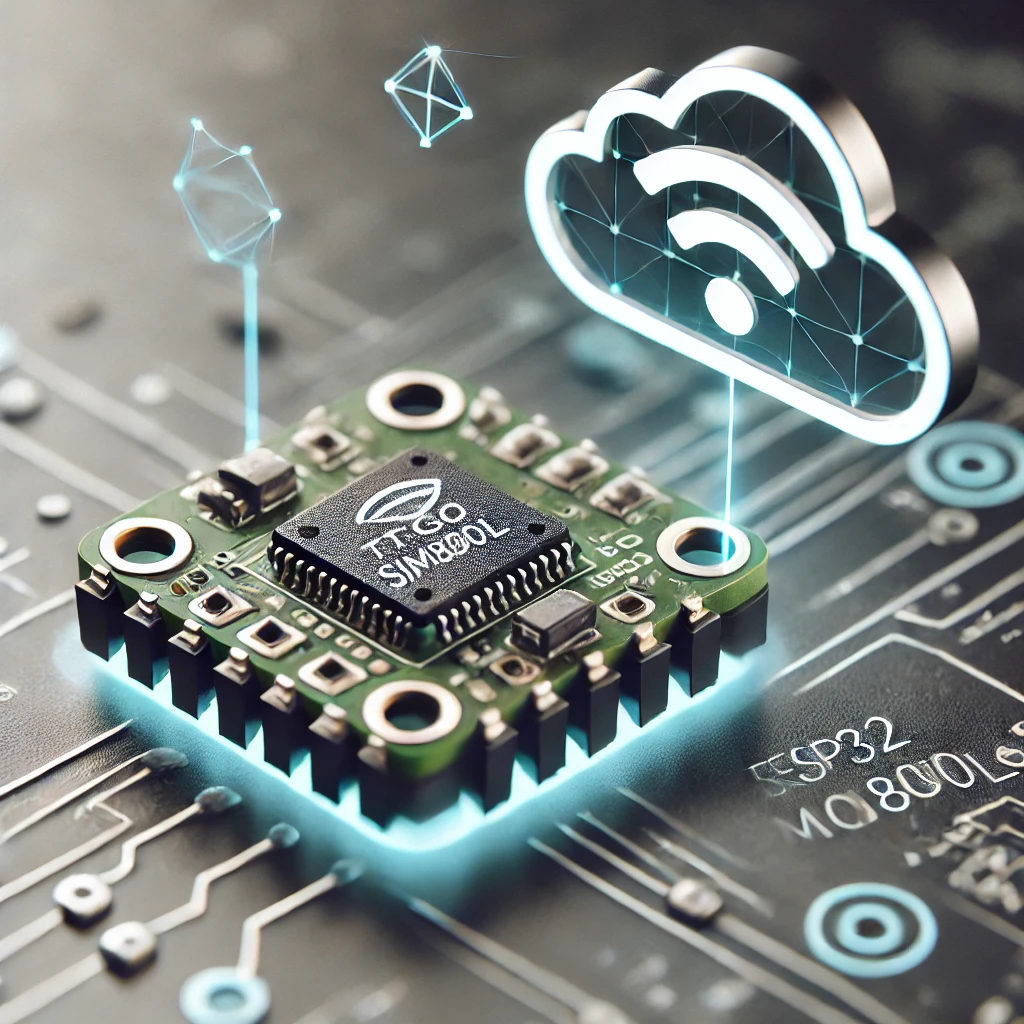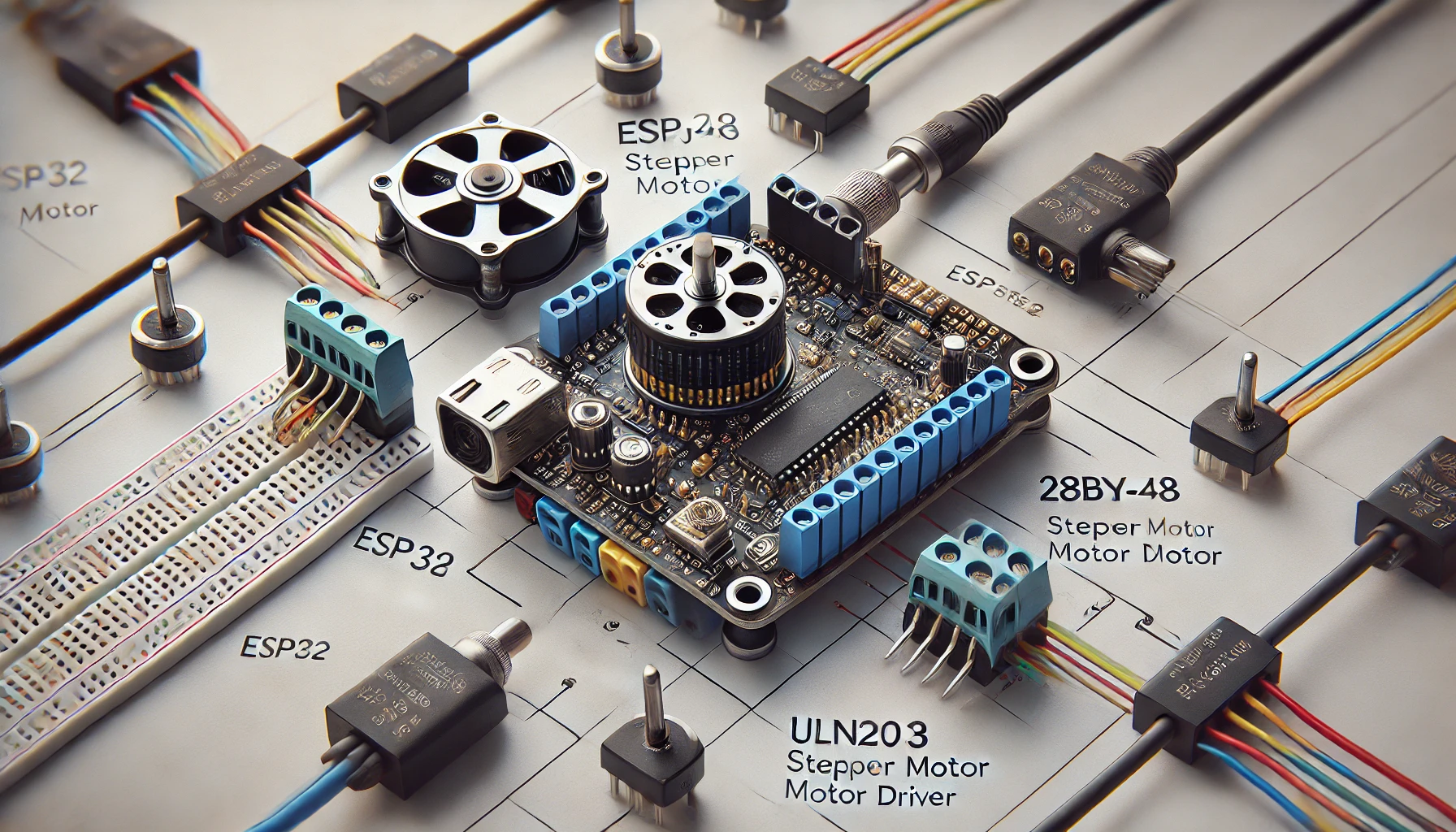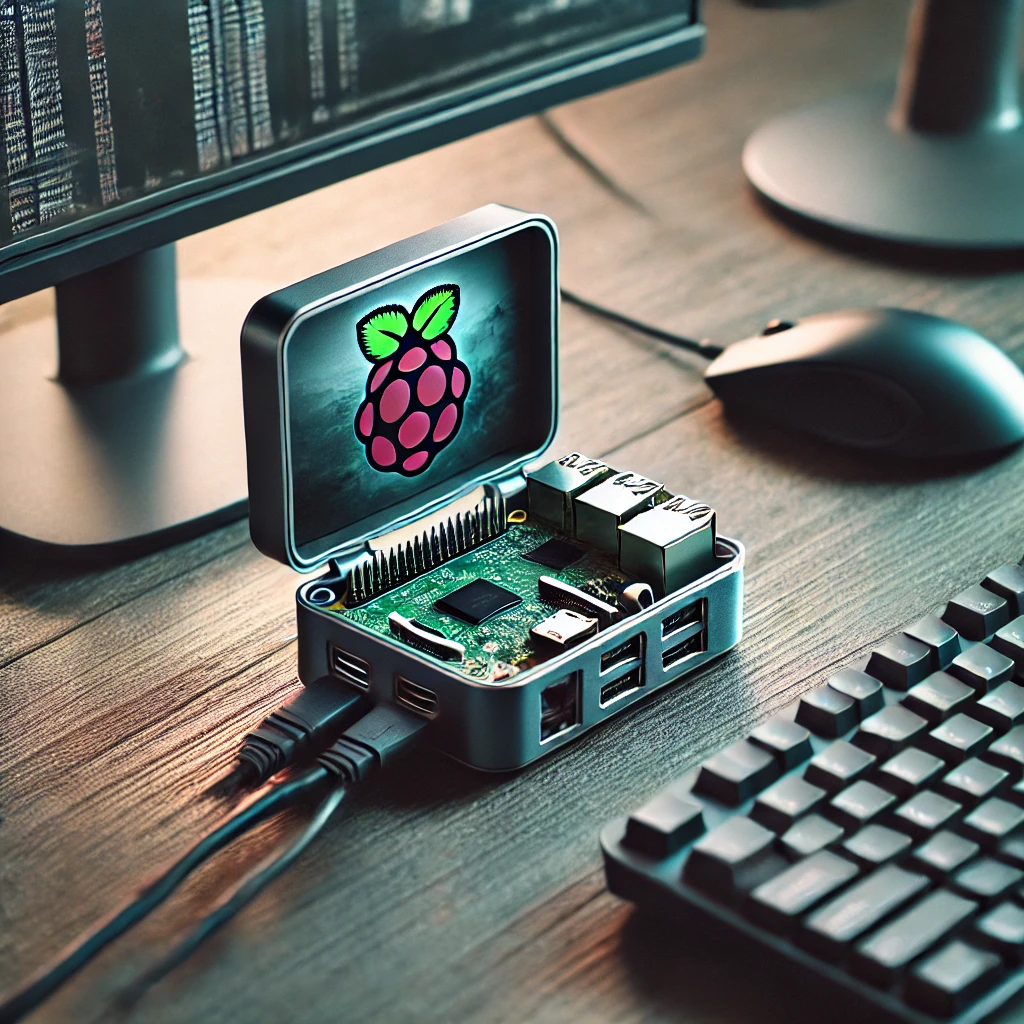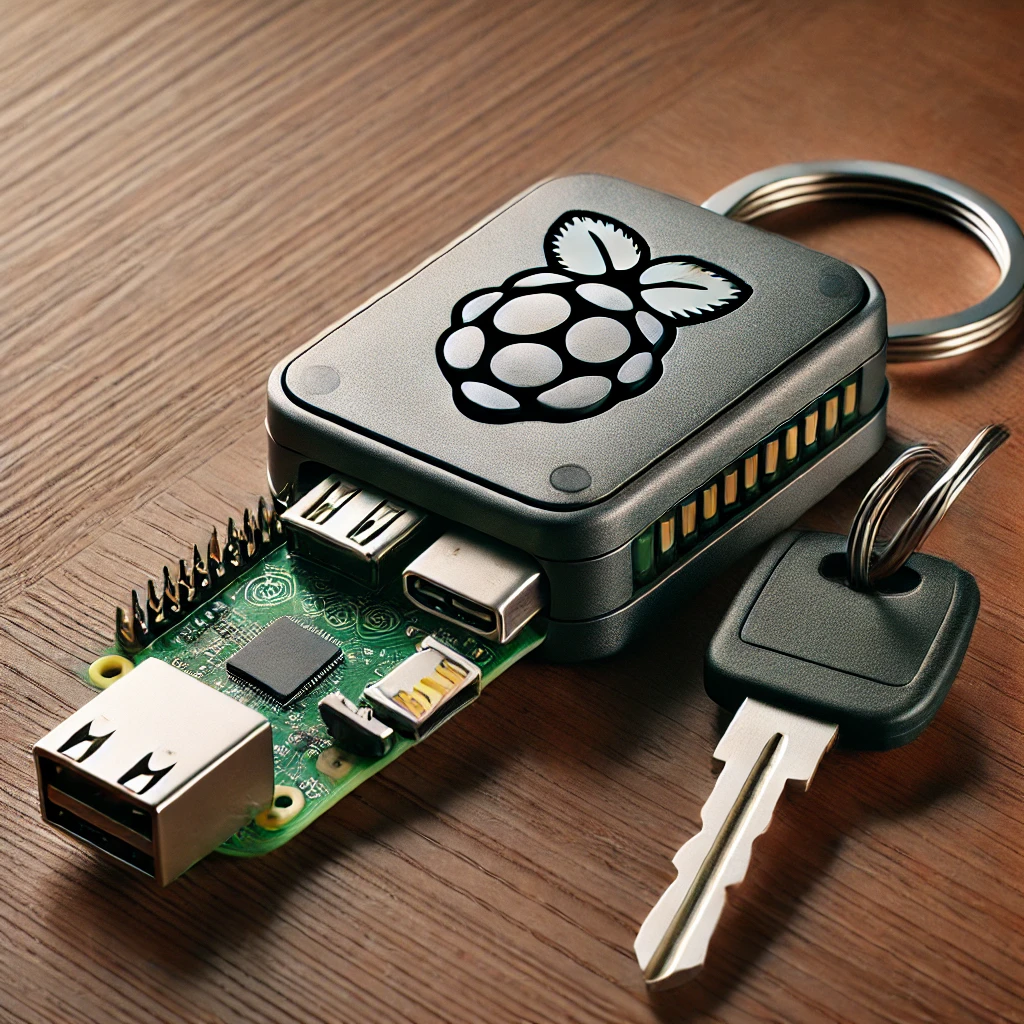Bluetooth Low Energy (BLE) is a wireless communication protocol designed for short-range, low-power communication. BLE is widely used in IoT devices due to its efficiency and long battery life. The ESP32 microcontroller, with its integrated Wi-Fi and Bluetooth support, is an excellent platform for developing BLE applications. With its powerful dual-core processor and low power consumption, the ESP32 makes it easy to create innovative BLE-based solutions for home automation, wearable devices, environmental monitoring, and more.
This guide will explore how to leverage the ESP32’s BLE capabilities, focusing on both BLE server and client configurations. By the end of this article, you’ll have the knowledge to create BLE applications using the ESP32, optimized for real-world use cases.
Understanding BLE Architecture: A Primer
BLE Device Roles: Server and Client
In BLE communication, devices can play two primary roles: server and client. A BLE server typically provides services and characteristics that can be accessed by a client. The server might be a sensor or device that collects and exposes data (like temperature, heart rate, etc.), while the client might be a smartphone, computer, or another ESP32 that requests or interacts with the data.
GATT (Generic Attribute Profile)
The Generic Attribute Profile (GATT) is the foundation of BLE communication. It defines how data is organized and exchanged between BLE devices. GATT defines a hierarchical structure of services and characteristics:
- Services: A collection of related characteristics.
- Characteristics: Data points within a service, representing a specific value like a temperature reading or heart rate.
Advertising and Scanning
Before any communication can happen, BLE devices need to discover each other. This is done using advertising (from the server) and scanning (from the client). The server broadcasts packets containing information about its services, while the client scans these packets to find available servers.
Security in BLE Communication
BLE includes built-in security features such as pairing and bonding. Pairing allows devices to exchange encryption keys and establish a secure communication channel, while bonding ensures that devices remember each other’s credentials for future connections.
Setting Up the ESP32 Development Environment for BLE
Installing the Arduino IDE and ESP32 Board Support
To get started with the ESP32 and BLE, the first step is setting up your development environment. Arduino IDE is one of the easiest platforms to use for ESP32 development. Start by downloading and installing the Arduino IDE from the official website. Once installed, you’ll need to add the ESP32 board support. Go to File > Preferences, and in the “Additional Boards Manager URLs” field, add this URL:
Then, go to Tools > Board > Boards Manager, search for “ESP32”, and install the package.
Installing the BLE Libraries
ESP32 comes with built-in BLE support through several libraries such as BLEDevice, BLEServer, and BLEClient. To use these libraries in your project, you need to install them via the Arduino Library Manager:
- Go to Sketch > Include Library > Manage Libraries.
- Search for and install the
ESP32 BLElibrary.
Choosing the Right ESP32 Model
The ESP32 family includes various models, such as the ESP32-WROOM-32 and ESP32-WROVER. Choose a model that suits your needs in terms of features like available GPIO pins, Wi-Fi and Bluetooth range, and memory.
Connecting the ESP32 to Your Computer
To upload code to the ESP32, connect it to your computer via a USB cable. In Arduino IDE, make sure to select the correct board model under Tools > Board, and the appropriate port under Tools > Port.
Test BLE Communication on ESP32
Before diving into the complexities of BLE server and client setups, test the ESP32’s BLE functionality. You can use simple example sketches, such as those found under File > Examples > ESP32 BLE in the Arduino IDE, to verify that the environment is set up correctly.
Creating the ESP32 BLE Server
Initializing the BLE Server
To create an ESP32 BLE server, you first need to initialize the BLE device and set its name. In Arduino, you can use the BLEDevice class to initialize the BLE stack:
Next, create a BLE server object using the BLEServer class. This object will handle BLE connections and manage services and characteristics.
Defining Services and Characteristics
After setting up the server, define the services and characteristics you want to expose. For example, if you’re creating a temperature sensor, you would create a service for the temperature and a characteristic to hold the temperature value:
Here, SERVICE_UUID and CHARACTERISTIC_UUID are unique identifiers (UUIDs) for your service and characteristic.
Setting Up Callbacks for BLE Events
BLE events, such as a client connecting or reading a characteristic, are handled via callbacks. These events are essential for managing communication between the server and client. Use the BLEServerCallbacks class to define custom behavior when certain events occur (e.g., when a client connects):
Advertising the BLE Server
To make your BLE server discoverable, you need to advertise it. This is done using the BLEAdvertising class, which broadcasts information about the server and its services. In your setup function, use:
Handling Client Connections
Once the server is advertising, a client can connect to it. The server needs to handle client interactions, including reading or writing characteristics. BLE allows a client to read values from the server or send commands via write operations.
Security Considerations
To secure BLE communication, you can implement pairing and bonding. Pairing involves exchanging encryption keys, and bonding allows devices to remember each other for future connections.
Setting Up the ESP32 BLE Client
Initializing the BLE Client
The BLE client on ESP32 is initialized using the BLEClient class. The client needs to connect to an available BLE server and interact with its exposed services and characteristics. Initialize the client as follows:
Scanning for Available Devices
The client must first scan for available BLE servers. Use the BLEScan object to search for devices advertising specific services. You can set the scan parameters and begin scanning:
Connecting to the Server
Once the client detects a server, it can initiate a connection. The client connects to the server using the BLEClient.connect() method, passing the address of the server:
Reading and Writing Characteristics
After establishing a connection, the client can read or write characteristics exposed by the server. To read a characteristic value, use:
To write to a characteristic, you can send data like this:
Handling Client Disconnects
Handling disconnects is essential to ensure stable communication. The client should check the connection status and attempt to reconnect if necessary. This can be achieved by using callbacks or simply monitoring the connection state in the main loop.
Security in BLE Clients
Like the server, the BLE client should implement security features to protect sensitive data. Pairing and bonding ensure that communication remains secure and encrypted.
Real-World Applications of ESP32 BLE
Home Automation
One of the most common uses for BLE on the ESP32 is in home automation. You can create BLE-enabled devices such as smart bulbs, thermostats, and security systems that communicate with smartphones or other BLE-enabled devices.
Wearable Technology
BLE on the ESP32 can be used in wearable devices such as fitness trackers or health monitoring systems. These devices can communicate real-time data (like heart rate or steps) to a smartphone or another central device.
Asset Tracking
Using BLE tags attached to assets, ESP32 devices can track and manage inventories in warehouses, retail stores, or logistics. The BLE server can be placed in a central location, while the client devices, such as smartphones, can scan for tags to track the assets.
Final Thoughts on ESP32 BLE
The ESP32 offers a powerful and flexible platform for BLE communication. Whether you’re building a server or client, the ESP32’s robust set of tools, libraries, and examples makes it an excellent choice for IoT and BLE-based projects. With proper setup and security measures, BLE allows devices to communicate effectively, efficiently, and securely, making it ideal for applications such as home automation, healthcare, and asset management.
By mastering BLE on the ESP32, you open the door to a world of low-power, wireless communication solutions that can power next-generation IoT devices. Happy coding!
Feel free to check out our other website at http://master3dp.com/ where you can learn to 3D print anything needed for a project.

